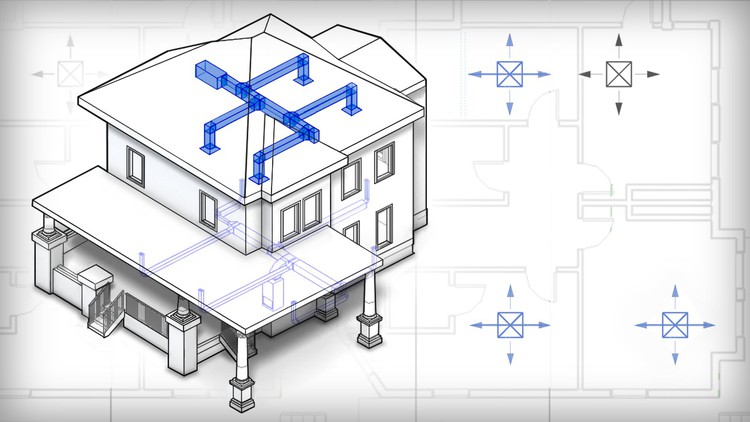
HVAC Modeling in Revit MEP From Beginning to Advanced Level
What you will learn
Creating a Heating and Cooling Load Report
Laying out First Floor Hvac Equipment
Modeling Duct Work
Checking and Insulating the Duct System
Setting up Equipment for the Second Floor System
Modeling Duct Work
Description
In this series of tutorials, I’ll teach you how to work with HVAC systems in Revit MEP. Our install project will be located on the first and second floor of a single-family home. We’ll begin our project by establishing zones and spaces in order to determine our heating and cooling load requirements. Once we’ve established what the needs are for each space, we will then begin laying out the equipment for our system. With equipment in place, we’ll learn a few easy ways to model duct work and even test your system for pressure loss. Once you become comfortable using the tools in this workflow, you’ll be able to design your next installation with confidence and precision using Revit MEP.
While in Autodesk Revit, link the Architect’s model into your project to ensure that your MEP model will remain current.
Place air terminals throughout your project; add elevations and air flows using the Options Bar and Properties Palette. Connect air terminals to mechanical equipment with ducts to create duct networks.
You can choose from predefined duct types or use the Routing Preferences dialog to assign the fittings you wish to use.
Draw ducts directly from the connectors on air terminals and mechanical equipment. Revit will create air systems. MEP connectors are logical entities that enable the calculation of loads in a project.
‘;
}});
You can connect ductwork together simply by dragging the duct’s connectors into another segment of ductwork. Snaps and snap lines help to expedite the process. Fittings are automatically placed for you.
If you split a section of ductwork and then change its size, the appropriate transition fittings will be added for you.
You can easily switch to a section view at any time to continue modeling.
Revit provides an intuitive set of tools to help you model intelligent HVAC systems for your MEP projects.
